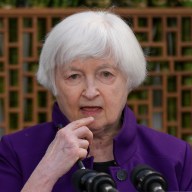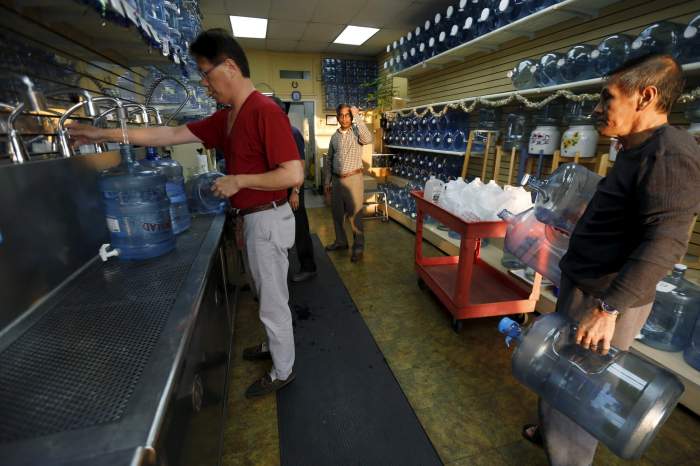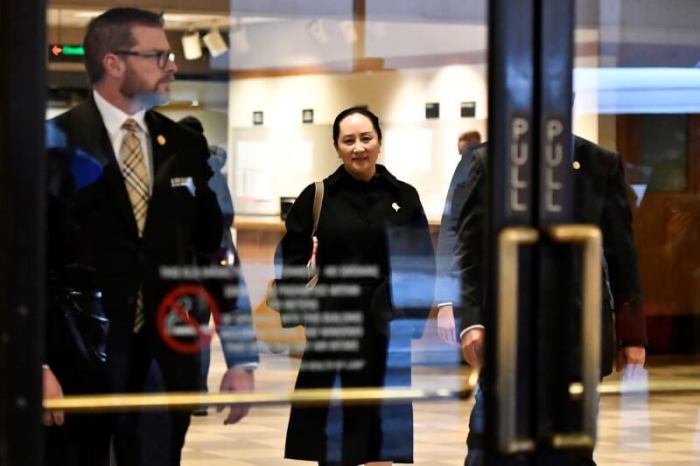By Lucia Mutikani
WASHINGTON (Reuters) – U.S. consumer confidence fell for a fourth straight month in November amid worries about current business conditions and employment prospects, but remained at levels sufficient to support a steady pace of consumer spending.
Another report on Tuesday showed an unexpected drop in new home sales last month, but data for September was revised higher to show purchases hitting their highest level in over 12 years. The housing market, the most sensitive sector to interest rates, is catching up to the Federal Reserve’s easy monetary policy stance, which has pushed down mortgage rates from last year’s multi-year highs.
Though housing accounts for a fraction of gross domestic product, it has a bigger economic footprint. The rise in housing activity early in the fourth quarter together with a narrowing in the trade deficit suggest some support for the economy as it slows amid cooling consumer spending and persistent weakness in business investment and manufacturing.
The Trump administration’s 16-month trade war with China has been largely blamed for the ebb in consumer confidence. The trade fight has also hammered business confidence, leading to a downturn in capital expenditure.
Trade tensions between the two economic giants have eased in recent weeks, with President Donald Trump saying on Tuesday that Washington was in the “final throes” of a deal with Beijing.
“The economy is growing, but it would take a politician to say it is in good, let alone great shape,” said Joel Naroff, chief economist at Naroff Economic Advisors in Holland, Pennsylvania.
The Conference Board said its consumer confidence index slipped to a reading of 125.5 this month from an upwardly revised 126.1 in October. The index was previously reported at 125.9 in September. Economists polled by Reuters had forecast the index would climb to 127.0 in November.
The survey’s present situation measure, based on consumers’ assessment of current business and labor market conditions, fell to 166.9 this month from 173.5 in October. But the expectations index drawn from consumers’ short-term outlook for income, business and labor market conditions rose to a reading of 97.9 from 94.5 last month.
Consumer confidence has retreated from a recent peak of 137.9 in October 2018. Still the index remains relatively high and is consistent with an economy growing at a moderate pace. Growth estimates for the fourth quarter are below a 2.0% annualized rate after a 1.9% pace in the third quarter.
The Conference Board survey’s so-called labor market differential, derived from data on respondents’ views on whether jobs are plentiful or hard to get, fell to 32.1 in November from 36.1 in October. That measure closely correlates to the unemployment rate in the Labor Department’s employment report.
“This suggests on the margin some slowing in job gains going forward, but overall the labor market remains strong,” said Kathy Bostjancic, chief U.S. financial economist at Oxford Economics in New York.
The dollar was steady against a basket of currencies, while U.S. Treasury prices rose. Stocks on Wall Street were trading higher, with the three main indexes hitting all-time highs on rising hopes of a U.S.-China trade truce.
LOWER MORTGAGE RATES
In a separate report on Tuesday, the Commerce Department said new home sales dropped 0.7% to a seasonally adjusted annual rate of 733,000 units last month.
September’s sales pace was revised higher to 738,000 units, the highest since July 2007, from the previously reported 701,000 units. Economists had forecast new home sales, which account for about 11.3% of housing market sales, would increase 1.1% to a pace of 709,000 units in October.
New home sales are drawn from permits and tend to be volatile on a month-to-month basis. Sales surged 31.6% from a year ago, concentrated in the $200,000-$400,000 price range. Homes priced below $200,000, the most sought after, accounted for only 9% of sales.
Reports last week showed housing starts surging and building permits vaulting to more than a 12-year high in October, and home resales advancing. The renewed strength in housing activity has been accompanied by a pickup in home prices.
A third report on Tuesday showed the S&P CoreLogic Case-Shiller 20-metro-area house price index increased 2.1% from a year ago in September after rising 2.0 % in August. Firming house price inflation was also corroborated by another report from the Federal Housing Finance Agency showing home prices advancing 5.1% in September from a year ago.
Residential investment rebounded in the third quarter after contracting for six straight quarters, the longest such stretch since the 2007-2009 recession.
“We think that real residential investment will increase again during the quarter, with the housing market continuing to benefit from the drop in mortgage rates relative to late last year,” said Daniel Silver, an economist at JPMorgan in New York.
But the housing market momentum could slow as mortgage rates have backed up in the last two months, partly driven by ebbing fears of a recession amid the thaw in U.S.-China trade relations.
The Fed last month cut rates for the third time this year and signaled a pause in the easing cycle that started in July when it reduced borrowing costs for the first time since 2008.
In another report, the Commerce Department said the goods trade deficit dropped 5.7% percent to $66.5 billion in October, driven by further declines in both exports and imports.
The shrinking trade gap is positive for the calculation of GDP and suggests trade could support the economy in the fourth quarter. But the continued decline in both exports and imports is a worrying trend and suggests the White House’s “America First” policy was reducing trade flows.
“Global trade volumes continue to plummet, suggesting global growth continues to weaken,” said Chris Low, chief economist at FHN Financial in New York.
(Reporting by Lucia Mutikani; Editing by Paul Simao and Chizu Nomiyama)














